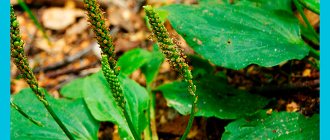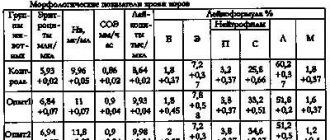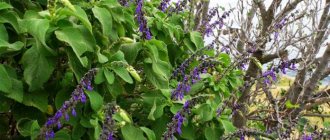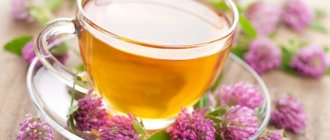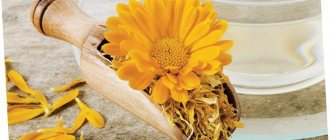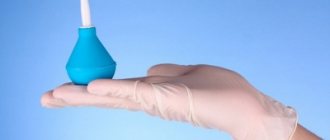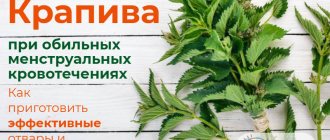Like many medicinal plants, stinging nettle is used in traditional medicine as an adjuvant in the treatment of various diseases. Due to the unique chemical composition and medicinal properties, nettle leaves and juice, as well as herbal remedies based on them, are used as an immunostimulating, anti-inflammatory, hemostatic and disinfectant. But most often, medicinal forms of nettle are prescribed in the absence of contraindications as maintenance therapy for diseases in the field of gynecology: heavy periods, for uterine contractions and in other cases.
Medicinal properties of nettle in gynecology
Nettle has long been considered a female plant, however, unlike traditional medicine, its use in gynecology is more effective, since it is based on comparing the properties of the biologically active components of the plant with the diagnosis. This takes into account the dosage, contraindications, duration of the course of administration, and dosage form, while folk recipes used according to the “finger in the sky” principle for self-medication can cause irreparable harm to the body.
Nettle owes its healing properties to its unique composition, which includes vitamins A, K, B, C, minerals, 9 out of 10 essential amino acids, phytoestrogens, chlorophyll, lignin and phytoncides. In combination, these substances actively influence all biological processes in the body, have a general strengthening and antioxidant effect, and normalize the functioning of all organs and systems. There are many areas of use of nettle in medicine, but it is in the treatment of gynecological diseases that this plant is most in demand.
Let us consider in more detail the pharmacological properties of nettle in the treatment of female diseases:
- Preparations from nettle juice have a hemostatic effect during uterine bleeding and heavy menstruation. The pronounced hemostatic property is achieved due to the content of a large amount of vitamin K in the fresh leaves of the plant, which is involved in the synthesis of prothrombin, a complex protein that ensures blood clotting.
- Decoctions from dry raw materials, on the contrary, have a thinning effect on the blood, stimulate erythropoiesis and are used for congestion, inflammation and to restore the normal number of red blood cells after large blood losses.
- For benign formations in the endometrium of the uterus, a decoction of nettle roots and seeds is used. This remedy has a constricting effect on blood vessels, due to which the blood flow to the tumor slows down, and along with it its growth stops.
- In addition, decoctions and tinctures from the seeds of this plant contribute to the expansion of the fallopian tubes, which increases the chance of a favorable conception and eliminates the possibility of ectopic pregnancy.
- Due to the chlorophyll content in nettle, decoctions and tinctures from this plant promote vascular contraction and tone the uterus. These properties of the plant are used to restore the contractile activity of the uterus and reduce bleeding during the postpartum period.
- In addition, chlorophyll promotes the regeneration of mucous tissue and reduces the manifestations of the inflammatory reaction. Tampons with freshly squeezed juice are prescribed as an auxiliary therapy in the treatment of cervical erosion, vulvitis and vulvovaginitis.
- Nettle contains phytoncides - plant biologically active substances similar in action to antiseptics. They suppress the growth and development of bacterial and fungal infections, as well as chlamydia. Decoctions of nettle leaves are used for douching during the treatment of thrush, eliminating white plaque in the vagina, and quickly restoring the mucous membrane after tears received during childbirth.
- Phytoestrogens present in nettle do not have a hormonal effect, however, with regular use, these substances can regulate the menstrual cycle in women and reduce the symptoms of menopause.
- Herbal teas based on nettle are used to increase lactation; in addition, the high content of microelements and vitamins prevents the development of anemia and strengthens the immune system of a nursing mother.
- Nettle is a leader in magnesium content, which has a positive effect on women's health, increases libido, relieves pain during menstruation, and normalizes the monthly cycle.
- The use of nettle reduces the production of the enzyme 5-alpha reductase in the body, which promotes the formation of the active form of testosterone - dihydrotestosterone.
Depending on the problem or disease, the gynecologist may recommend taking nettle in dosage forms as an adjuvant or maintenance therapy. To improve blood composition and normalize the monthly cycle, use various parts of nettle in dry form, and if necessary, stop bleeding or delay menstruation, use plant juice.
Nettle is famous for its ability to burn the skin, causing redness and blisters. If you decide to use the plant fresh, to avoid burns, you should collect the leaves with gloves on and then pour boiling water over them to neutralize formic acid.
Women's diseases: prevention and treatment
So, why is this herb so valuable in the treatment of female diseases?
Having a hemostatic property, nettle is widely used during uterine blood loss, while stinging nettle is used, since its healing properties are more suitable for the treatment of female diseases.
Nettle leaves, from which they are made, can help with female diseases:
- extracts;
- decoctions;
- infusions;
- powders.
For example, the use of leaf extract normalizes the menstrual cycle and has a beneficial effect on inflammatory processes, and can also help increase hemoglobin and increase the level of red blood cells and leukocytes in the blood.
During periods of heavy menstruation, menopause, and uterine bleeding, a nettle decoction will come in handy. Nettle juice narrows the channels of the circulatory system, which has a beneficial effect on the uterine muscles. In gynecology, the healing properties of nettle are widely used and the emergence of medicines based on it serves as proof of this.
Before taking various drugs, think about your body before taking powerful hormonal drugs, antibiotics, which have a detrimental effect on the functioning of the body as a whole. Choose a more gentle course of treatment based on medicinal herbs; there will be no harm from this, and the result will be excellent health. Often, doctors themselves offer their patients a gentle course of treatment based on nettle; this is especially important for young expectant mothers.
The use of nettle in gynecology, recipes and methods of their use - table
| For what disease | Dosage form | Ingredients | Cooking method | How to use |
| With heavy menstruation and uterine bleeding | Fresh juice | Fresh nettle leaves | The leaves are taken from the stems, crushed with a knife and squeezed, squeezing the juice through cheesecloth. The resulting juice is consumed in its pure form, according to the dosage. Before each meal, fresh juice is prepared, since it oxidizes in air and quickly loses its healing properties. | Take 1 teaspoon of juice three times a day, before meals. Duration of therapy is 5–6 days during menstruation. |
| To normalize the menstrual cycle | Alcohol tincture |
| Chop the leaves and crush them a little with a mortar to release the juice. Fill a dark glass bottle with greens and add diluted alcohol. Seal with a ground lid and set aside in a dark place for 10 days. | The medicine is taken in the evening by diluting 30 drops in 100 ml of water. The course of admission is 21 days before the onset of menstruation. |
| For cervical erosion | Tampons soaked in nettle juice | green plants | The leaves are ground in a meat grinder and placed in cheesecloth, squeezed out. A gynecological, sterile tampon is soaked in the resulting liquid and left overnight. | Tampons with nettles are used every night, except during menstruation. The duration of the course is individual. |
| A decoction for douching from nettle and bergenia rhizomes |
| Bergenia rhizomes are poured with 250 ml of boiling water and simmered on the stove for 20 minutes. Then add dry nettle to the saucepan and boil for another 5-7 minutes. The finished broth is filtered and boiled water is added to it so that the total volume of liquid is 300 ml. | For each douching, take 100 ml of decoction heated to 38 degrees. The procedure is carried out morning and evening for 30 days. | |
| For uterine fibroids | Concentrated decoction of nettle roots and seeds |
| A mixture of seeds and crushed, dry nettle roots is poured with water and placed on low heat. Boil until half the liquid has evaporated. The product is infused for half an hour, after which it is filtered. | The decoction has a bitter taste, so it should be diluted with 3 tbsp of water. l per glass. The product is drunk four times a day before meals. The course of therapy is 3 weeks. |
| For vulvitis | Herbal decoction |
| St. John's wort herb is placed in boiling water and boiled for 10 minutes over medium heat. Then add dry nettle leaves and immediately remove from the stove. Let the broth sit for 15 minutes and strain. | Take 150 ml three times a day. The course of treatment is 2 weeks. After a week's break, you can repeat the therapy. |
| For candidiasis. From white plaque in the vagina | Infusion for douching |
| Pour boiling water over the mixture of herbs and leave in a thermos for an hour. Strain the infusion and use for douching. You can store the product for no more than 2 days in a cool place, and before use, warm it up in portions (60–70 ml each) to body temperature. | Douching is carried out 2-3 times a day for a month. |
| To increase lactation | Herb tea |
| Grind the fennel seeds in a mortar, add dry nettle and pour boiling water over it. Leave for 5–10 minutes. | Tea to increase lactation is consumed twice a day. The course of treatment is individual, it is determined by the doctor. |
| During menopause | Decoction of a mixture of herbs |
| The mixture of herbs is poured with boiling water and boiled in a water bath for 10 minutes. The broth is cooled and filtered. | The finished decoction should be divided into 4 servings and drunk throughout the day. The course of treatment is selected by the doctor individually. |
| For contraction of the uterus during the postpartum period | Infusion |
| Fresh leaves are placed in a teapot and poured with boiling water. Infuse the product for 20–30 minutes. | The infusion is taken chilled, 100 ml, three times a day. The course of treatment is 2 weeks. |
| To reduce dihydrotestosterone | Extract | Pharmaceutical preparation "Nettle extract" | Take the drug three times a day, 20–25 drops, diluting them in a glass of water. The course of treatment is 3 weeks. | |
| For infertility | Wine tincture |
| Pour port wine over the seeds and heat over low heat for 30 minutes. Leave for an hour and strain. Pour into a dark glass container and store in a cool place. | Take tincture twice a day, 1 tbsp. l. preheated or added to tea. The course of therapy is 6 months. |
| For endometriosis | Herbal infusion |
| Brew the mixture of herbs with boiling water and leave in a thermos for a quarter of an hour. Strain. | The infusion is taken during menstruation, 75 ml four times a day. |
Vaginitis: how will nettle help?
An important role is played by nettle in diseases such as vaginitis caused by fungi and bacteria.
The causes of this disease are:
- Failure to comply with sexual and personal hygiene;
- Failure of metabolism in the body;
- Endocrine system disorders.
The fundamental signs are: burning and itching sensations inside the vagina, bleeding, roughness and swelling of the mucous membrane. During treatment, you can use medications, as well as douching of the vagina and outer labia.
- Infusion for douching:
pour 0.5 liters of hot boiling water into the composition from 1 tbsp. spoons of nettle and 1 tbsp. spoons of chamomile. Let it brew for 30 minutes and strain after cooling. Be sure to sterilize the tip of the syringe before and after the douching process to avoid infection from the outside. Draw 40-80 ml into a syringe. infusion and pour inside the vagina, not forgetting the outer labia. Do such infusions no more than 3 times a day. - Prepare the decoction
: 1 tbsp. spoon of nettle and 1 tbsp. pour a spoonful of St. John's wort into 250 ml. boiling water and boil for 14 minutes, let it brew and cool, filter and consume in the amount of 1 teaspoon, 3 doses per day.
Contraindications and possible side effects
Nettle, and various preparations based on it, contain biologically active components that can not only benefit the complex treatment of female diseases, but also harm the body. Contraindications to the use of such therapy are:
- Pregnancy - nettle preparations increase the tone of the uterus, which can cause miscarriage in the early stages. In addition, the property of this plant to reduce blood flow can affect the development of the fetus in the second and third trimester, since thick blood is not able to deliver nutrients and oxygen in the required quantities.
- Malignant tumors - according to some reports, phytoestrogens can stimulate the growth of cancer cells. Official medicine has not yet confirmed, but has not refuted, this information. Therefore, for diseases such as breast cancer, ovarian or cervical cancer, it is better to refrain from using such therapy.
- Cardiovascular diseases associated with the risk of blood clots and varicose veins. The property of nettle to thicken the blood is useful for bleeding, however, for patients with heart defects and a tendency to thrombophlebitis and varicose veins, such treatment will only do harm.
- Hypertension. Various nettle-based drugs tend to increase blood pressure, which can be dangerous for people with systolic blood pressure levels above 140–160 mmHg.
- Liver diseases. In addition to its positive effect on the functioning of the organs of the female reproductive system, nettle is a choleretic agent and activates the hematopoietic function of the liver. In case of cholelithiasis and various liver diseases, preparations based on this plant can cause hepatic colic and other pathological conditions.
- Individual intolerance to the plant.
- For kidney diseases.
We should not forget that medicinal plants, like synthetic drugs (tablets, injection solutions) affect the body due to the content of active substances in them. The natural origin of such products does not guarantee the absence of side effects.
Most often, when taking nettle medications incorrectly or for a long time, patients complain of the following side effects:
- headache;
- dizziness, black spots before the eyes;
- prolonged absence of menstruation;
- cramps in the lower abdomen.
In order to protect yourself from such manifestations, you should not use nettle preparations on your own, without the advice of a doctor. Before prescribing, the specialist must consider all contraindications, comparing them with medical history, selecting the correct dosage and course of treatment, which is individual for everyone.
Menopause and women's well-being
Menopause has symptoms such as:
- frequent headaches;
- mental disturbances;
- insomnia;
- nervousness, etc.
Herbal medicine based on nettle decoctions, which have sedative properties, will help alleviate and cure these ailments.
The recipes of our ancestors are still relevant today, so:
- Decoction 1st:
Pour 1 tbsp into a 200 g glass. spoon of dried nettle leaves, pour boiling water, cover with a thick cloth and let brew for 6-8 hours. Then strain and take 25-35 minutes before meals, 1 tbsp. spoon 3 times a day. - Decoction 2:
You need to mix 1 tbsp. a spoonful of oregano and 1 tbsp. a spoonful of dried nettle leaves. Pour the resulting mixture into 200 g. boiling water Keep on low heat for 12-17 minutes. Let cool and strain. Take small sips throughout the day.
Reviews about the use of the plant for problems with menstruation and other gynecological ailments
The gynecologist told me to drink nettle so that my period would start))) I had a delay, I drank nettle for a week 4 times a day and my family came)))
Yanko
https://www.woman.ru/health/woman-health/thread/3839054/3/
I drank nettle for about a month, but with the purpose of cleansing the blood. My period started on time, but lasted 2 days instead of 4, and then on the second it was already blurry. I didn’t know that it was because of the nettles. ))) I had already done three tests, went to the gynecologist and had an ultrasound done. The effect is certainly cool, but it took a lot of nerves
Alesya
https://www.woman.ru/health/woman-health/thread/3839054/3/
I recently encountered the same problem myself. I read a lot of reviews. Now I can share my experience. I wanted to delay my period by 2-3 days. I started drinking nettle in about a week, as indicated on the box. Before meals, 3 times a day. Bottom line. My period arrived at 6! days earlier))). This has never happened to me at all. I don’t even know when the next ones will be now, although everything was like clockwork. Definitely, I will not conduct any more experiments.
Guest
https://www.woman.ru/health/woman-health/thread/3839054/3/
The medicinal properties of nettle are used in gynecology for auxiliary therapy for inflammatory and infectious diseases, to normalize hormonal levels, and stop bleeding. Nettle is also useful for vitamin deficiency and anemia, since it contains a whole complex of vitamins and microelements. However, you should not get carried away with self-medication; at the first symptoms of the disease, you should consult a doctor to establish a diagnosis, and only then consult with a specialist about the rationality of using nettle-based products as part of complex therapy.
Nettle and its healing properties have been known to humanity since ancient times. The first mentions of the healing power of the plant appeared in Ancient Greece. Since then, traditional healers have created dozens of recipes to help people restore health and improve their general condition in the process of curing various diseases. As an auxiliary remedy, nettle is widely used in the treatment of a number of diseases in the field of gynecology: menstruation disorders, uterine bleeding and other ailments. You just have to remember some contraindications to using the miracle plant.
The benefits of nettle for uterine bleeding, heavy menstruation
Nettle is a plant famous for its composition; plant materials contain vitamins, flavonoids, tannins, and esters. The burning herb also contains folic acid, calcium, and formic acid.
- The combination of elements brings considerable benefits for uterine bleeding:
- reduces the amount of menstrual flow;
- reduces the risk of developing infectious diseases, which often happens with heavy bleeding;
- causes uterine contractions, which helps stop bleeding;
- stops inflammation of the uterine mucosa;
- relieves pain, muscle spasms;
- improves general condition and well-being.
Gynecologists also recommend using home remedies based on herbal raw materials to stop bleeding after the birth of a baby and surgical interventions.
The only warning is not to use herbal formulations on your own; some medications can react with the active elements contained in the herbal remedy.
Nettle collected in the last month of spring is considered the most useful. If you have the opportunity to stock up on medicinal plant materials yourself, it is recommended to set aside a little time for harvesting and drying the herbs. Dry leaves and young shoots do not lose their medicinal properties for two years.
Useful properties of nettle in gynecology and more
So why is nettle so beneficial for women’s health? Why is this plant so often used as an indispensable assistant in the treatment of gynecological diseases? The answer is quite simple, the whole point is that nettle contains useful vitamins and microelements with bactericidal, tonic, healing, restorative, anti-inflammatory and hemostatic properties.
For example, severe menstrual blood loss is often associated with poor blood clotting. The body lacks vitamin K and the blood becomes excessively thin, leading to increased bleeding. Sufficient quantities of this vitamin are found in nettles. Calcium, the required amount of which is present in the plant, is also important for improving blood clotting.
Nettle as a hemostatic agent
Vitamin K contained in nettle has a hemostatic (ability to stop bleeding) property, due to which it is used in gynecology for heavy bleeding during menstruation.
During the postpartum period, women sometimes experience disorders associated with the muscle layer; uterine contractions are either completely absent (atony) or they are very weak (hypotonia). The result of these disorders can be quite strong bleeding.
This cannot be done without the help of a surgeon, but after the operation the healing properties of nettle decoction will help restore the tone of the uterus, since the chlorophyll contained in nettle has a beneficial effect on the intrauterine environment.
Application
Traditional medicine confidently recommends nettle as an adjuvant in the treatment of a number of gynecological diseases. Pre-prepared (dried) as well as fresh nettle leaves are used in cooking
Nettle for menstruation
To reduce the amount of discharge upon the onset of menstruation, a decoction of nettle is traditionally used. You should know that with heavy menstruation, in addition to taking medications and decoctions (as an aid), you will need to remain in bed, avoid physical and sports activities, and avoid warm and sunbathing.
Recipe for using the decoction
One tablespoon of dry, crushed nettle leaves is poured into 1 cup of boiling water and boiled for 5 minutes. After this, the decoction is infused for 30–40 minutes. and is completely ready to eat.
Take the decoction for three days, orally, 1/2 cup, 3 times a day.
You should know: nettle infusion increases blood clotting, which requires special caution when used by people with hematopoietic problems.
Nettle decoction is also used to reduce the level of dihydrotestosterone (androgen of the male sex hormone), in case of menstrual irregularities, as well as in cases of increased hair growth. In these cases, the amount and scheme of using nettle as an auxiliary remedy is prescribed by the attending physician, taking into account the individual characteristics of the patient.
How to use plant leaves for erosion
Freshly squeezed nettle juice is used as an additional remedy to speed up the treatment of erosion. It helps relieve inflammation and get rid of the infectious environment.
How to take for women's health
Twist young nettle shoots into a meat grinder, strain the resulting mass and squeeze onto cheesecloth. Roll a clean bandage into a tampon and dip it in the resulting juice, then insert it into the vagina for 1 hour.
During the procedure, you should maintain bed rest. The course of treatment is 1–4 days, depending on medical recommendations.
You can store the prepared mixture for 2-3 days in the refrigerator. Freshly squeezed juice, immediately after pressing, can be slowly heated over low heat, which will extend its use up to 3-5 days.
How to drink a tincture to contract the uterus after childbirth
To improve the processes of uterine contraction after childbirth, a nettle tincture is prescribed. It must be remembered that in this case the female body has suffered quite a heavy load, so treatment in the postpartum period should be treated with special care and caution, strictly following all medical prescriptions and completely eliminating any self-medication.
Method of preparation and dosage
Four tablespoons of dry nettle are poured with boiling water in an amount of 0.5 liters. The container is closed with a lid and left for several hours until it cools completely. When preparing a drink from pharmaceutical filter bags, pour 120 ml of boiling water into 1 bag and let it steep until it cools completely.
The tincture should be taken orally, 1/2 cup, 3 times a day, for three days.
Benefits for conception
Due to the fact that nettle has a beneficial effect on metabolism, enriches the body with calcium, magnesium and iron, improves blood circulation, has anti-inflammatory properties and has a positive effect on the condition of the endometrium (uterine tissue), it is often prescribed during the period of possible conception of a child. In addition, nettle tea is used after the birth of a baby, stimulating lactation processes.
How to prepare the product correctly
Both fresh and dry (crushed) nettle leaves, as well as bags sold in pharmacies, are suitable for making tea. Place one tablespoon of dry or fresh leaves in a small saucepan, add warm, boiled water and bring to a boil over low heat. As soon as the water boils, the fire is immediately turned off and the saucepan is covered with a lid. After 30 minutes, the drink is ready to drink.
If desired, you can add honey or sugar to the tea. Take the drink 1 glass, 3 times a day, 20 minutes before meals.
Instructions for preparing a drink from pharmaceutical sachets are indicated by the manufacturer on the packaging.
Nettle for mastopathy
In the auxiliary treatment of mastopathy, dry nettle leaves are used as part of a special herbal mixture.
How to carry out treatment
One teaspoon of the collection is poured with boiling water (200 ml). Cover with a lid and infuse for 30 minutes. After this, the mixture is filtered through a sieve or cheesecloth and is ready for use.
The infusion should be drunk between meals, 2-3 times a day. The course of treatment lasts for one and a half months.
Herbal mixture for mastopathy - table
| № | Ingredient | Proportion |
| 1. | nettle | 2 parts |
| 2. | dandelion | 3 parts |
| 3. | celandine | 4 parts |
| 4. | valerian (root) | 1 part |
| 5. | motherwort | 1 part |
| 6. | eucalyptus (leaves) | 2 parts |
| 7. | pine needles | 2 parts |
| 8. | birch (leaf) | 1 part |
| 9. | thyme | 1 part |
How does it help with fibroids?
With uterine fibroids, general weakness is often felt, and you may also need to recuperate after blood loss. It is in such cases that nettle tea comes to the rescue, as well as freshly prepared salads.
Water bath tea recipe
Three tablespoons of dry, crushed nettle leaves, pour 1/2 liter of boiling water. Leave in a water bath for 15–20 minutes. After this, the drink is left to cool until completely cooled and filtered through a sieve or cheesecloth.
You should drink tea 3 times a day, 1/2 cup, between meals. You can also divide the finished infusion into several parts and use it throughout the day. The course of treatment is 20–30 days.
Making fresh nettle salad
A salad made from fresh leaves of the plant is considered one of the best aids in the treatment of fibroids. To prepare it you will need several stalks of green onions, a small bunch of dill and parsley, the young nettle leaves themselves, as well as boiled eggs, vegetable oil (sunflower, olive), salt and spices.
First, the leaves should be thoroughly washed and doused with hot boiled water, after which they are slightly dried, finely chopped, finely chopped onions and herbs, pepper, salt and hard-boiled, chopped eggs are added to them. If desired, you can add mayonnaise or sour cream to the salad.
Nettle for endometriosis
Decoctions of the plant are quite effective for endometriosis. Doctors recommend using nettle as an additional treatment to help restore immunity, stimulate the body's defenses, and prevent inflammation.
Preparation of medicinal composition
To prepare nettle infusion you need 2 tbsp. dry, crushed leaf of the plant, pour 0.250 ml (about 1 cup) of boiling water. The poured leaves are heated in a water bath for 15–20 minutes. Then the broth cools, carefully filters through cheesecloth, and squeezes out. The resulting liquid is diluted with boiled water to 200 ml and taken three times a day, between meals. The course of treatment is 20–30 days.
Nettle for polyps and cysts
If polyps and cysts occur, a good additional remedy for relieving inflammation would be herbal mixture No. 5, which includes white nettle flowers.
Erosion - causes and treatment
Main reasons:
- weakened immune system (largely associated with taking hormonal-based contraceptives);
- disturbances in the functioning of the hormonal system and, as a result, irregular periods;
- infections, as well as inflammatory processes (trichomoniasis, chlamydia, gonorrhea).
Using traditional medicine, you can supplement the main treatment, and thereby speed up the process of treating erosion.
Tampons soaked in freshly squeezed nettle juice and inserted inside the vagina will help get rid of the infectious environment. The time the tampon is inside should not exceed 1 hour. However, it should be noted that during these procedures, doctors recommend bed rest from 1 to 4 days.
Do not forget about douching, without them the recovery process may be delayed.
- Prepare a decoction for douching:
250 ml. pour boiling water over 2 tbsp. tablespoons of chopped rhizome and boil for 25 minutes, 5-7 minutes before the end, add 1 tbsp. spoon of nettle. Strain the hot broth and let it cool, douching 3 times a day. As a rule, before the onset of menstruation, each representative of the fairer sex begins to increase breast volume, accompanied by pain in this area. Nettle infusion will help block and completely eliminate pain in the chest. Since nettle herb is a natural antispasmodic and has a calming and analgesic effect on the entire body, its use during menstruation cannot be underestimated. You should start taking the decoction immediately a couple of days before the start of menstruation. - Decoction for oral administration:
pour 2 teaspoons of dried nettle into a 200 gram glass and pour in boiling water, filling the glass halfway, cover with a lid, let it steam and cool, use the decoction during the day. You can also dilute nettle juice with boiled water in a ratio of 1:4 and drink 15 minutes before meals. - No less useful is the following recipe:
After chopping the nettle leaves, take 1 tbsp. spoon and brew 200g. boiling water, cook for no more than 15 minutes, then strain. Visually divide the glass into 3 parts and drink in small sips throughout the day.
Contraindications and side effects
Nettle is a rather unique plant that has long been eaten and used for the preparation of medicines, but it also has a number of contraindications:
- tumors of the uterine appendages;
- uterine tumors;
- bleeding from polyps;
- increased blood clotting;
- increased blood viscosity (with atherosclerosis, hypertension);
- lack of a clearly defined medical diagnosis;
Pregnant and lactating women, children, and people with allergies to herbs should also use nettle with caution.
The plant is not recommended for use in the treatment of patients suffering from renal and heart failure, which is due to its diuretic properties.
There is a myth that taking nettle decoctions can speed up the onset of delayed periods, or provoke their delay; this is not true. Most likely, these judgments are caused only by the plant’s ability to have a beneficial effect on the body’s hormonal levels, due to the large amount of vitamin E necessary for the full functioning of the reproductive system.
Reviews about the treatment
Mother Nature has thought of everything for us! My use of nettle: for hair, for “problem periods”, in intimate hygiene. Advantages: easy and quick to prepare, many useful properties, wash my hair on the fourth day, eases heavy periods, stops bleeding, useful, natural concentrate of vitamins, strengthens hair, accelerates hair growth. I’ve been meaning to write this review for a long time, but I finally got around to it)))
Real_Woman
https://irecommend.ru/content/matushka-priroda-vse-produmala-za-nas-moe-primenenie-etikh-listev-dlya-volos-pri-problemnykh
Previously, I had heavy discharge (I took Vikasol the old fashioned way), and after hormonal medications the problem was solved... But it arose after a polypectomy... Which was done successfully, but the first periods were too heavy and lasted for more than ten days like a tap (sorry), Well, I had to buy pills! But I still decided to look for more humane remedies... And first, try them, and if that doesn’t help, then take pills... So they suggested trying a nettle decoction. On the first day, the bleeding began to decrease and I decided to hold off on taking the pills... And the next day everything returned to normal (and I felt noticeably better)... On the third day, the discharge stopped completely..
Red Queen
https://irecommend.ru/content/obilnye-mesyachnye-chto-delat-kak-ostanovit-krovotechenie-bezopasno-i-polezno-reshit-problem
As a supporter of naturopathy, I turn to traditional medicine (tablets, mixtures) extremely rarely, because... I believe that the benefits of their use can hardly exceed the harm they cause to the body. I try to make do with natural remedies. The most important property of nettle, which was definitely noticed in my family, is the ability to improve the blood formula. Within just 2–3 weeks of using nettle, hemoglobin increases noticeably and the number of leukocytes normalizes. It is clear that hemoglobin is increased due to the high iron content in weed.
any11
https://irecommend.ru/content/tselebnoe-rastenie-uluchshaet-sostav-krovi-bystro-podnimaet-gemoglobin-retsept-s-foto
In conclusion, I would like to emphasize once again that nettle and medicinal tinctures, decoctions, and teas prepared with its use have unique qualities that can help the body cope with many ailments. The plant must be used wisely, adhering to the doctor’s prescriptions and remembering that the main motto of any health-related activity is “Do no harm.”
With the help of nettle, you can relieve the symptoms of many gynecological diseases, and in some cases even achieve a significant therapeutic effect and normalize the functioning of the body as a whole.
